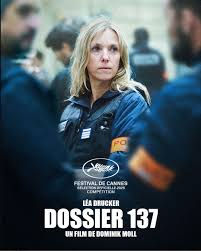The Alto Knights
- Nicolò Roncone
- 3 giu
- Tempo di lettura: 3 min
Aggiornamento: 5 giu

We are far from the masterpieces of crime drama and gangster cinema like Scorsese’s Goodfellas, Coppola’s monumental The Godfather, or the cult classic Donnie Brasco. Barry Levinson (director of Sleepers, Good Morning, Vietnam, and more) knows this all too well. Yet despite this, a detail that’s likely irrelevant except as a historical inheritance of a particular style of storytelling, he chooses to take on an origin story, a return to a narrative focused on the making of a nation, on a grim reality forged by power, politics, and the mafia at the dawn of New York’s Five Families.
The Alto Knights Social Club is the hub of a community, a criminal one, where both the early and final years of the rise of two of the most powerful mafia figures in American history unfold: Vito Genovese and Frank Costello. The mafia sons of Lucky Luciano clash over old grudges, rivalries, misunderstandings, and murders in the frenetic New York City of the 1950s and ’60s, an era marked by the first federal-led investigations into organised crime, haunted by the political and economic ghosts that would rule the city for the next 40 years.
Levinson brings to the screen not just another mafia tale, far less “gangster” than one might expect, but does so with a deliberately semi-documentary style: he reconstructs the personal and labour-related conflicts between the Five Families of New York, but more importantly, between two old friends now on opposite paths. Frank Costello, seemingly clean-cut and the product of traditional American political-mafia collusion, is on his way out; Vito Genovese, ruthless and power-hungry, has no regard for the old rules of the Commission as he seizes control as "boss of bosses." The clash between these two titanic criminal figures becomes a multi-layered narrative, spanning politics and family. Levinson focuses all his efforts on meticulously reconstructing the events, ambitions, and contrasting personalities that led to the collapse of their alliance. Perhaps we’re looking at another excellent mafia film with a broad narrative scope without taking anything away from Levinson's typically steady and confident direction.
Still, what truly stands out once again is the monumental presence of one of the greatest actors of all time: Robert De Niro, in a dual role brought to the height of excellence, a performance we perhaps haven’t seen since Scorsese’s epic The Irishman. Vito Genovese, in particular, becomes the perfect fit for De Niro, an opportunity to once again embody, with the same energy of his most iconic roles, a gangster in all his arrogance and violence, not just physical, but verbal too, with an air of superiority over all men. In stark contrast stands Frank Costello, portrayed with a sharp, calculated political and criminal wit, almost like a television personality, who captivates the American audience while playing cat-and-mouse (as the mouse himself) before the commission led by Senator Estes Kefauver.
What we have here, then, is a film that in many ways feels familiar, the child of a cinematic tradition that, sadly, may be permanently tied to another era in terms of pacing, staging, and target audience. Yet under Levinson’s strong narrative direction, bold in its structure but never confusing, and the performances of a cinematic legend like De Niro, one of the year’s most unexpected films reveals itself as a breath of nostalgia and pure classic cinema, reminding us once again which giants we can still count on.
by Nicolò Roncone




Commenti